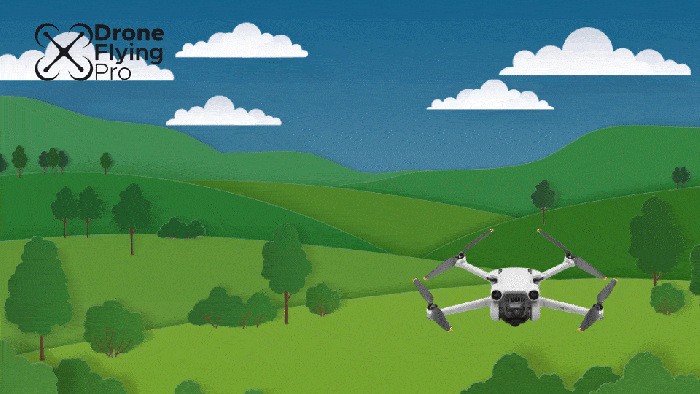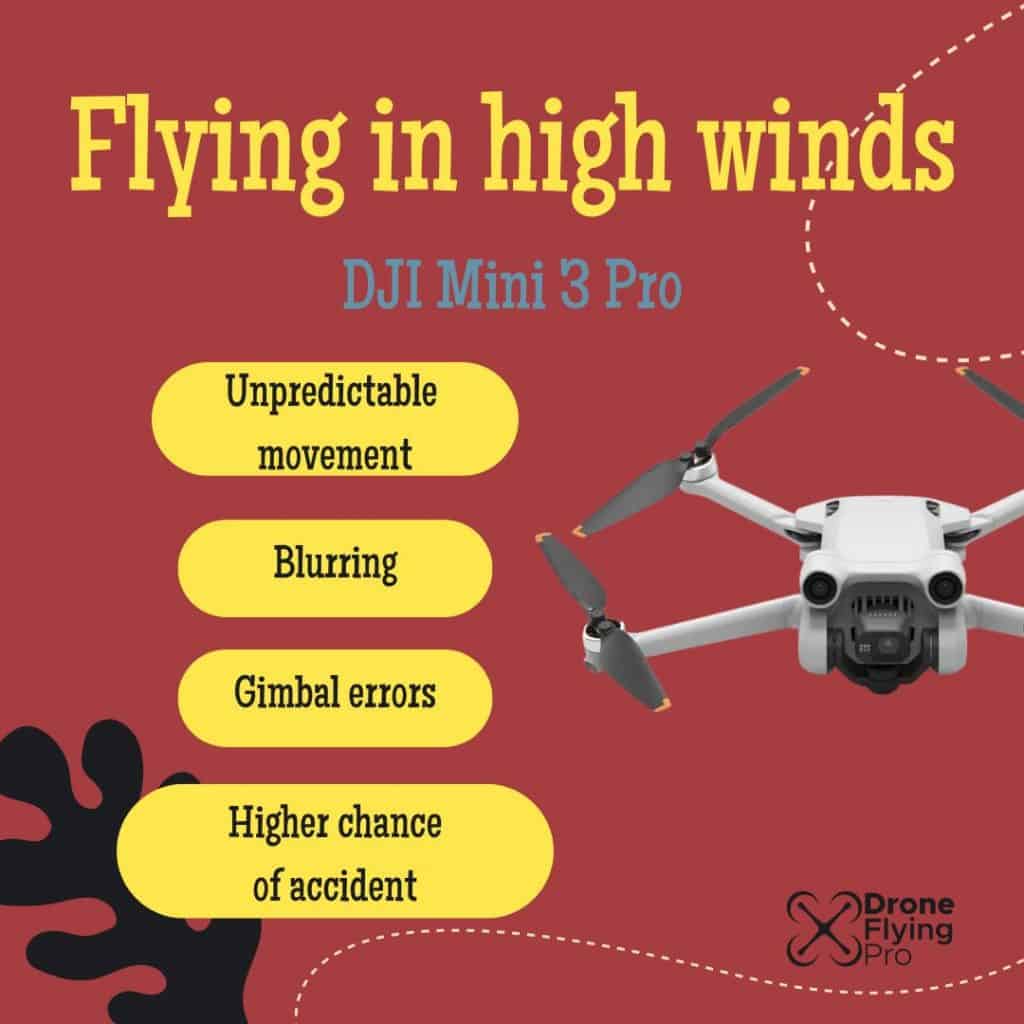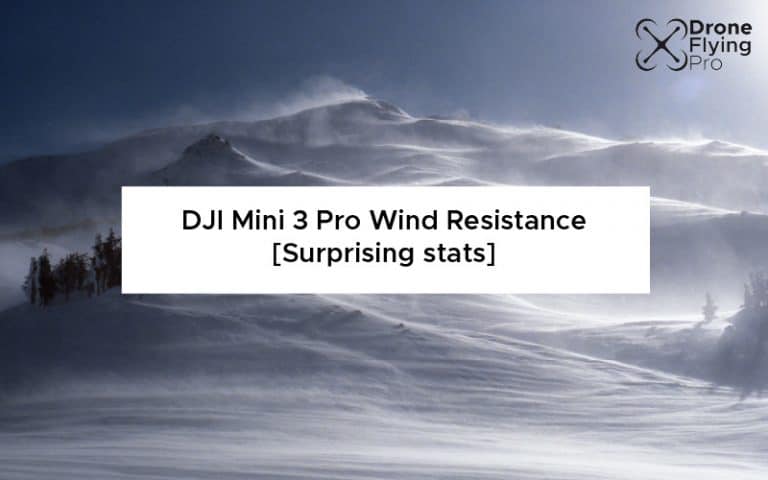The DJI Mini 3 Pro is a fantastic drone and a worthy upgrade to many older models of DJI drones. A drone’s wind resistance is one of the biggest factors that ensures stable flight and cinema-quality photos and videos.
According to DJI, the wind resistance of the Mini 3 Pro is 10.7 m/s (Level 5 winds). This level of wind is enough to sway small trees and feel a small pressure against your body.
The wind resistance of the DJI Mini 3 Pro is affected by the light weight of the drone and the operating temperature whilst flying.
Also, there are a variety of other modes that can allow the pilot to take more control in windy situations. Sports mode allows for much greater agility and speed and is more responsive to stick control movements.
To understand why the DJI Mini 3 Pro is limited to maximum wind resistance of 10.7 m/s, we have to understand how a drone resists winds coming from various directions.
How the Mini 3 Pro resists high winds
To stay stable during flight, the drone has to change the power supplied to each motor and, therefore the angle at which the drone flies.
When a drone is in a windless environment, it will fly and stabilise perfectly level. However, once sideways wind pushes against the drone, the drone will spool up the motors on the opposite side of the drone to the wind and slightly tilt the entire drone to one side.
Tilt
The drone is limited to a maximum tilt angle during flight. Moving beyond this maximum tilt angle, the drone is at risk of losing enough upwards acceleration to maintain its stability and current location.
In normal flying mode, the DJI Mini 3 Pro has a maximum tilt angle of 25°. The maximum flight speed in this mode is 10 m/s, equivalent to its maximum wind resistance.

Should your drone struggle to stay in one location when you are not touching the joysticks and notice that the drone is at an extreme angle of 25°, you should land as soon as possible to keep the drone safe.
Maximum tilt angle on Mini 3 Pro
| Maximum tilt angle | Forward: 40°, Backward: 35° (S Mode) 25° (N Mode) 25° (C Mode) |
What happens if you fly above maximum wind resistance?
Drone pilots are sometimes very ambitious with what their drones are capable of achieving and the conditions that they are able to fly in.
Flying your drone at wind speeds greater than the mentioned wind resistance might cause a variety of problems, including an increased risk of crashing your drone or being involved in a serious accident.
In my experience, the manufacturer’s quoted wind resistance for drones is frequently conservative.
Still, it’s recommended to err on the side of caution and never fly faster than the wind speed specified in the specifications.

If you opt to fly in very windy circumstances, these are all the challenges you should anticipate facing.
Unpredictable movement
The drone’s wind resistance and manoeuvrability depend on how much power the drone can put out from its motors.
The drone has to respond quickly, and the higher winds you fly in, the more unpredictable the drone movement can be during the flight, especially if the wind is gusty and not continuous.
If the wind is gusty, the high wind isn’t always a concern because the drone will return to its GPS location and height once the gust has passed. The drone would drift indefinitely if there were a continuous breeze stronger than the wind resistance.
While flying my drone on Lord Howe Island in extremely severe gusts, I encountered a constant drift. The drone warned me that the motors were overheating and that I needed to land immediately.
It was a bit of a panic, but I could securely return my drone before it was blown away into the ocean.
Blurry Images
Higher wind speeds make it difficult for your drone to collect sharp photos and video.
Drones have been programmed to compensate for low wind speeds using the gimbal. If you fly your drone outside of these guidelines, the camera and drone will not adjust for the increased instability when capturing a photo.
Videos will become significantly less steady, and the gimbal will struggle to produce smooth footage while flying in severe winds.
The DJI Mini 3 Pro gimbal has a maximum tilt range of -90 to +60°, and to control roll angles of -90° in portrait mode and 0° in landscape.
If you are operating your drone in high winds, you are likely approaching these limits at the extreme movements of the camera.
Operating your drone with its gimbal at or near its limit will result in much shakier and unstable footage and photos.
Higher risk of accidents
In stronger winds, your drone is more likely to move erratically and encounter issues such as high motor speeds, rapid battery drain, high wind alerts, etc.
Many drone pilots disregard these warnings, but they should be taken seriously under high-wind circumstances. In most cases, returning to your takeoff site is preferable and landing your drone as soon as possible. Unless you have a goal to fulfil during your flight, it is always preferable to return at a later time.
Returning to complete a mission on a day with far better wind conditions have resulted in a better outcome for both the drone and the client.
More gimbal errors
Your drone’s gimbal is a vital component, always attempting to overcome and compensate for flight instability.
I’m sure I’ve flown my drone when the wind was very severe, ignoring the high wind warnings and continuing to fly. The instability is usually obvious when looking at the flight from the first-person perspective.
As I change directions, the drone will bounce about and struggle to fight the wind, resulting in the film’s shocks, bumps, and jerky movement.
If you routinely fly in windy conditions, you’ll likely receive notifications about gimbal overload.
Factors that affect wind resistance
Several factors affect wind resistance, and you may be surprised about the impact of some normal operating conditions.
Outside temperature
DJI warns that the reduced battery capacity in low-level environments also reduces the wind speed resistance performance of the aircraft.
If you achieve a low-temperature notice or are flying in cold conditions regularly, make sure that you consider the impact of low temperatures on the wind resistance.
To ensure optimal battery performance, it is recommended that you keep the battery temperature above 20° C or 68°F.
Motor size
The size of the motors also impacts the wind resistance of the drone. A larger motor size means the drone can counteract wind movement more effectively with greater power output.
Drone weight
Smaller drones are affected by the wind more readily than larger drones.
Because the DJI Mini 3 Pro only weighs 250 g, it is more likely to be impacted by wind gusts and high winds.
Number of propellers
the number of propellers also affects the ability of a drone to counteract the effect of wind. However, the DJI Mini 3 Pro has four propellers with out the capability of adding more.
Shape of drone
The form factor and shape of the drone can also impact the wind resistance of a drone. Making a drone more aerodynamic means less of an area for the wind to press up against and push the drone.
The DJI Mini 3 Pro has been designed with aerodynamics in mind, which greatly minimises the effect of wind.
The final word
This article covers everything you need to know about the DJI Mini 3 Pro wind resistance and when you should land.
The drone has a wind resistance of 10.7 m/s. This level 5 wind resistance is commonly found in drones of this size and is limited by the drone’s size, tilt, and motor power.
Should you notice that your drone is becoming unstable during the flight, you should land as soon as possible and wait until most of the wind has passed.
Related Mini 3 Pro Articles:




